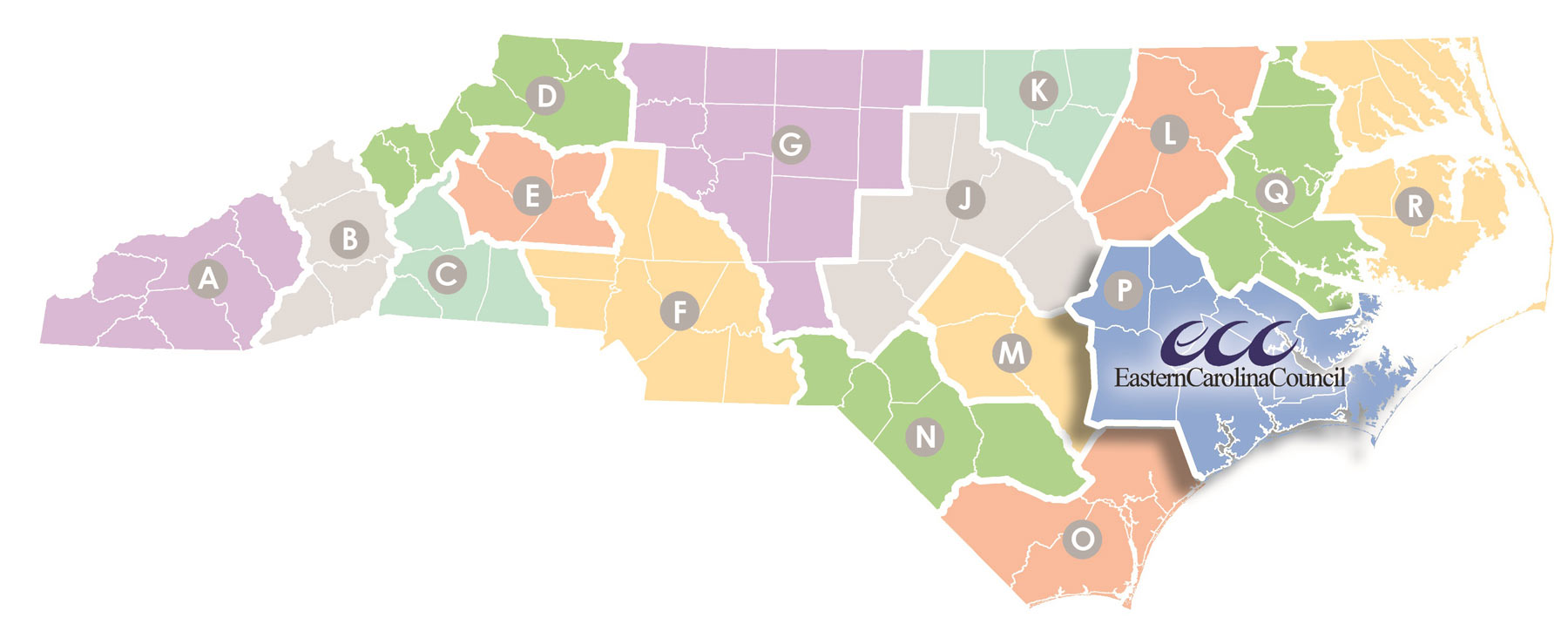
Regional Councils
North Carolina gained regional councils as a result of a 1969 legislation that charged the NC Department of Administration with developing “…a system of multi-county regional planning districts to cover the entire state” (gs 143-341). This came after Congress passed the Intergovernmental Cooperation Act in 1968 calling for closer cooperation between federal programs and state and local governments.
By 1970, an executive order had designated 18 regions in North Carolina. In 1971, the state announced its Lead Regional Organization policy that directed state agencies to deal with a single organization in each region of the state for services across several departments.
Regional councils have been operating in the state since 1972, though many were organically organized by local governments long before the official state designation. As the North Carolina landscape has changed over the years some of the regions have merged, bringing the current total number of regional councils serving the state to 16.
REGION A
Southwestern Commission: Cherokee, Clay, Graham, Haywood, Jackson, Macon, and Swain
REGION B
Land-of-Sky Regional Council: Buncombe, Henderson, Madison, and Transylvania
REGION C
Foothills Regional Commission: Cleveland, McDowell, Polk, and Rutherford
REGION D
High Country Council of Governments: Alleghany, Ashe, Avery, Mitchell, Watauga, Wilkes, and Yancey
REGION E
Western Piedmont Council of Governments: Alexander, Burke, Caldwell, and Catawba
REGION F
Centralina Regional Council: Anson, Cabarrus, Gaston, Iredell, Lincoln, Mecklenburg, Rowan, Stanly, and Union
REGION G
Piedmont Triad Council of Governments: Alamance, Caswell, Davidson, Guilford, Montgomery, Randolph, Rockingham, Davie, Forsyth, Stokes, Surry, and Yadkin
REGION J
Central Pines Council of Governments: Chatham, Durham, Johnston, Lee, Moore, Orange, and Wake
REGION K
Kerr-Tar Council of Governments: Franklin, Granville, Person, Vance, and Warren
REGION L
Upper Coastal Plain Council of Governments: Edgecombe, Halifax, Nash, Northampton, and Wilson
REGION M
Mid-Carolina Council of Governments: Cumberland, Harnett, and Sampson
REGION N
Lumber River Council of Governments: Bladen, Hoke, Richmond, Robeson, and Scotland
REGION O
Cape Fear Council of Governments: Brunswick, Columbus, New Hanover, and Pender
REGION P
Eastern Carolina Council of Governments: Carteret, Craven, Duplin, Greene, Jones, Lenoir, Onslow, Pamlico, and Wayne
REGION Q
Mid-East Commission: Beaufort, Bertie, Hertford, Martin, and Pitt
REGION R
Albemarle Commission: Camden, Chowan, Currituck, Dare, Gates, Hyde, Pasquotank, Perquimans, Tyrrell, and Washington
In 2010, these councils signed an Inter-Regional Cooperative Agreement that established a policy to enhance their value by sharing member resources and capacity to deliver services to the state. The Agreement allows regional councils and their affiliates to operate beyond their boundaries with consent, provided the services benefit both the region and the state.
The 16 councils of government also come together and collaborate on statewide projects and initiatives through the NC Association of Regional Councils of Government (NCARCOG).
